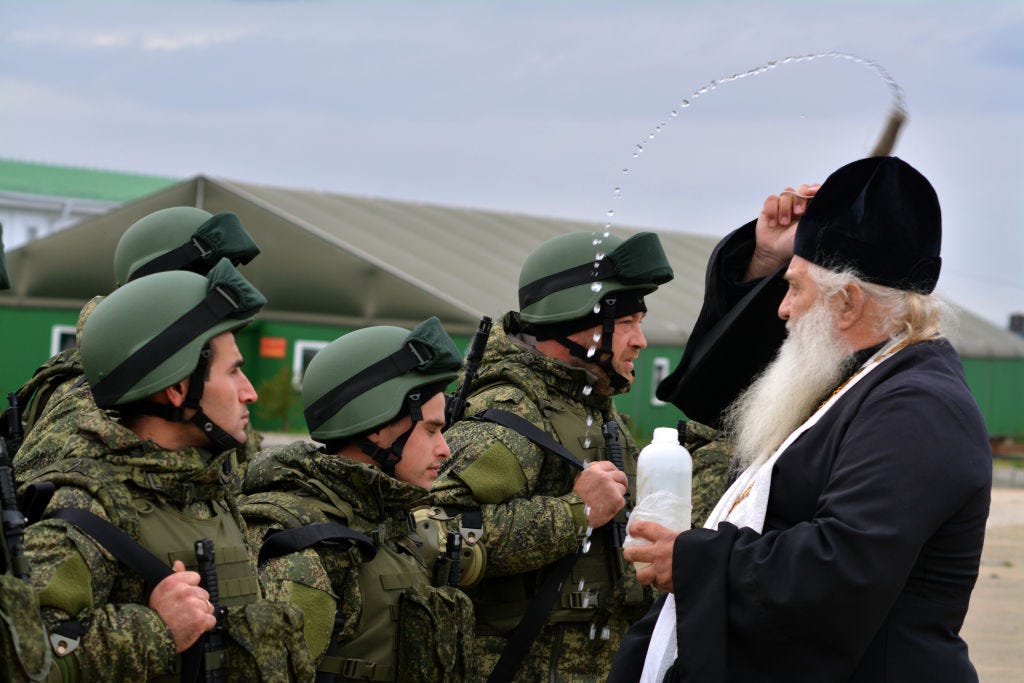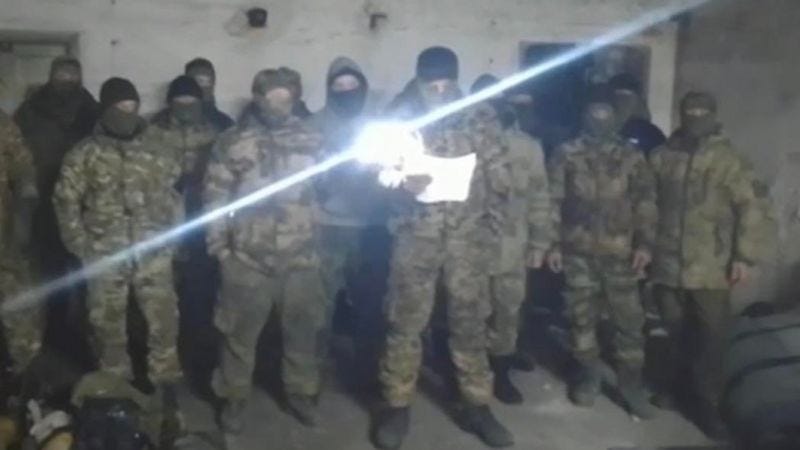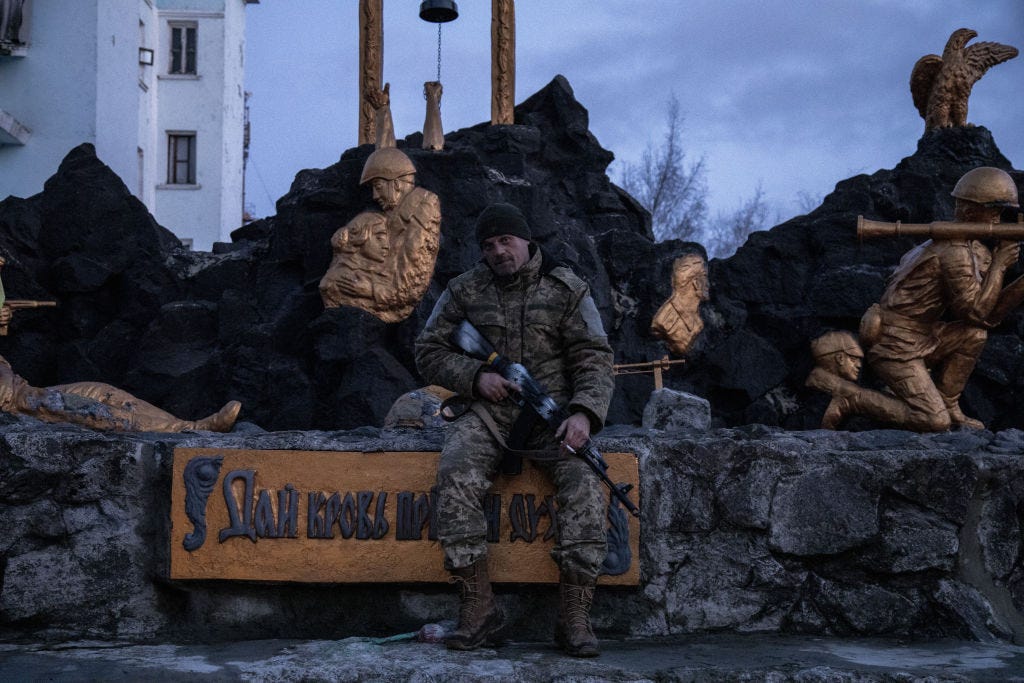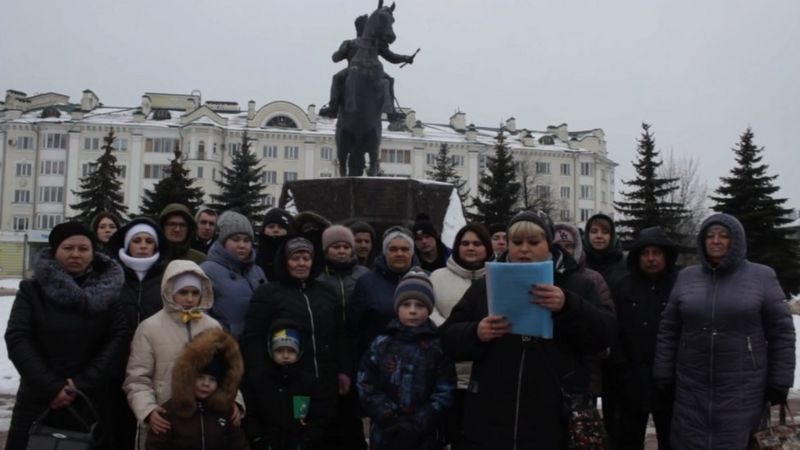'Meat grinder': the grim realities of life on the frontline for mobilised recruits
Recent videos offer a compelling glimpse into the realities of life on the frontline as ill-prepared and ill-equipped Russian soldiers are thrown into battle, often sustaining heavy casualties.
By Ilya Barabanov, Sergei Goryashko, Olga Ivshina, Anastasia Lotareva, and Olga Prosvirova.

Recently mobilised Russian soldiers are increasingly recording video appeals to raise concerns about conditions in the army. The videos offer a compelling glimpse into the realities of life for new recruits, as ill-prepared and ill-equipped soldiers are thrown into frontline positions, often sustaining heavy casualties. The videos also reveal big tensions between Russian soldiers and commanders from the separatist Donetsk and Luhansk ‘peoples’ republics’ they are frequently assigned to fight for. BBC Russian has been looking at what the soldiers are saying, and how the authorities are responding.
On 7 March a video was posted on a Telegram channel showing a group of mobilised Russian soldiers, from Kaliningrad, Murmansk and Arkhangelsk regions appealing to Vladimir Putin about their situation.
“There is no real strategy or tactics,” the soldiers said. “They are sending us into battle with no interaction with unit commanders, with no fire support and no means of day or night-time surveillance. We don’t have enough armoured vehicles. There is no artillery training.”
“You sit it out, smoke eight cigarettes, your hands are shaking because you’re scared shitless of this bullshit, no matter how old you are. And then they tell you to go out again.”
The video was the latest in a string of similar appeals from soldiers who have been mobilised to join the war in Ukraine, and find conditions are very far from what they had expected.
The mobilised men in the 7 March video said they had been told they would be serving in the defence force.
Instead they were sent straight to the frontline, reassigned to units under the command of the self-proclaimed republics of the annexed Donbas (DPR and LPR), to be used as ‘cannon fodder’ in assaults on Ukrainian positions.
“We were trained to defend,” the soldiers said. “We are not an assault unit. During our first assault, six men died in one trench alone.”
Not long after the video appeared, a second video was released by an online news channel in which an officer from Kaliningrad is seen trying to reassure the new recruits that their complaints are being listened to.
The soldiers’ faces are not visible in the footage, but their complaints, which are clearly audible, offer a revealing glimpse into the chaos and confusion some mobilised soldiers are apparently facing on the frontline.
“I told him, do you understand, we’re all going to die out there, either in the first battle or the second,” one solder recounts an exchange with one of his DPR commanders.
“He said - so what, you’re not the first and you won’t be the last.”
“Do what you want,” the soldier says he was told. “I’m getting out of here anyway.”
Another describes what it’s like to be sent to storm Ukrainian positions.
“You run over there under machine-gun fire, and then - bam! - a VOG [fragmentation grenade],” says the soldier.
“You sit it out, smoke eight cigarettes, your hands are shaking because you’re scared shitless of this bullshit, no matter how old you are. And then they tell you to go out again.”
Another complains that the DPR commanders are “dividing up the army themselves’ into locals from Donetsk, and Russians.
The mobilised soldiers in the video demand to be sent to the territorial defence force, for which they were trained:
“We aren’t refusing to join the defence force, as we were ordered, but we won’t go on the offensive. You can lock us up, life is worth more than this. I’ll earn money in prison and send it to my family.”
“It’s not my job to lock you up,” the commander tells the soldier, quietly, “I’ve heard things are difficult here.”
The soldiers retort that they are ready to leave the war-zone on foot or by taxi. One of them mentions a soldier who killed himself rather than be sent on a second assault.
“Did you see the pool of blood? This guy wouldn’t join the assault, he pulled the trigger because he knew where he was going.”
“Who dreamed up this marvellous solution?”
One thing that’s very clear from these exchanges, is that while the Kremlin now treats the Donetsk and Luhansk “People’s Republics” as its new territories, Russian laws and regulations do not yet fully apply there and the local commanders and their Russian recruits often do not see eye to eye.
Alexei, not his real name, is a commander of one of the Luhansk People’s Republic militia units.

He agreed to speak to the BBC on condition of anonymity and was scathing about the way the Russian Defence Ministry had in his words failed to provide the right kind of reinforcements.
“The fact is that the f*****g Ministry of Defence has no f*****g common sense” he said, before apologising for swearing.
“You’ve got to understand that by the beginning of February the LPR People’s Militia was already exhausted and beaten down.”
Alexei says his headquarters were told that the new recruits could be used in “meat attacks”.
When the BBC asks him to explain what that means, he laughs.
“You wouldn’t wish it on your worst enemy,” he says.
‘Meat attacks’ is phrase first used by mobilised soldiers from Donetsk and Luhansk in the battle for Mariupol in 2022.
It referred to the way newly-trained soldiers were sent out in front as storm troopers, with absolutely no regard for the inevitable heavy loss of life, in order to conserve more valued, trained fighters coming behind them.
Alexei told the BBC that many commanders who have been fighting with the separatist forces since 2014 are unhappy with the current situation.
“The Wagner guys are full of themselves but at least they’re actually fighting,” he says.
“But as for whoever dreamed up this marvellous solution [ie: mobilised recruits] – I don’t know what they were thinking. About money probably, and about how to deliver Kherson as quickly as possible. Of course, you feel sorry for people, but we can’t allow ourselves to feel pity while we’re in the middle of all this.”
“This is all that’s left of my platoon”
Footage of mobilised soldiers complaining about conditions began to appear almost as soon as the mobilisation campaign began, and they have gathered pace as the new recruits were deployed to frontline positions.
By March 2023 videos were being posted almost daily. All have a similar refrain – bemoaning poor equipment, beatings, and the failure of those in command to address the problems.

On 6 March, the day before the Kaliningrad soldiers posted their video, a group of mobilised soldiers from Belgorod went on camera to appeal for help.
A man in military fatigues, introducing himself as Senior Lieutenant Oleg Kasumov, stood in front of what he said were his surviving men.
He said he was refusing to carry out further orders because his platoon had suffered losses for the third day running.
His unit of mobilised soldiers were supposed to be defending Belgorod region, and had been stationed in the border town of Shebekino until 1 March, he continued.
But then they were reassigned to the First Army Corps of the self-styled DPR.
Kasumov said his men were dispatched on a 14-hour trip to Donetsk, their belongings and military IDs were confiscated, after which “completely unprepared soldiers were forced to storm villages”.
“We’re not refusing to follow orders, but we want to follow orders under the flag of the Russian Federation,” said the officer.
“We were forced to storm the villages without surveillance, communication or intel. We have no links to this region, we don’t have maps – in short, it’s complete bullshit. The troops are dying, this is all that’s left of my platoon.”
Kasumov’s video appeal was published by a local resident from Belgorod called Polina Kosenko, on behalf of the soldiers’ families.
When the BBC contacted her for comment she said that the issue had been resolved and everyone was ‘satisfied’ with the outcome.
She also said that she was not able to speak to the media "for well-known reasons."
For journalists following up on the videos, it is a familiar pattern of events.
“Sent to the slaughter’
Since January there have also been many video complaints from mobilised soldiers – and their wives, from Irkutsk region.
The first was published on 24 January. New recruits from the 1439th regiment said that they were trained for territorial defence, but were “thrown into the front of an assault” in Donetsk region.
The soldiers claimed that over two days they lost two men and a further 19 were wounded.

In a second video message dated 25 February, a group of mobilised troops discuss their assignment to the “First Slavic Brigade” of the DPR as part of the “People’s Militia.”
After one day they were rearranged into combat units and sent “to the slaughter” to storm Ukrainian defences in Avdiivka near Donetsk.
In the video, the soldiers claim that those who refused to fight were “shot by the commanders, with machine guns and the guns on infantry vehicles”.
Soldiers who ended up in hospital claimed that almost a whole regiment was lost during the storming of the Avdiivka industrial zone. (The Ukrainian army has been defending this suburb of Donetsk for eight years, and the frontline has scarcely moved since February 2022, despite repeated Russian attempts to advance – BBC.)
As in the case with the Belgorod soldiers, the video prompted the authorities to intervene to try to quieten things down.
On 26 February the head of Irkutsk region, Igor Kobzev, assured local people that troops from the area would soon be moving “to a new place of service”.
But the following day there were more complaints that recruits from Irkutsk had been threatened with charges of desertion, sent to join an offensive without prior training, and assured that they would never return.
According to the soldiers involved, a deputy commander who tried to intervene on their behalf was detained and sent away.
Emotions were running so high that on 3 March the Irkutsk authorities sent a group of local veterans of the Afghan and Chechen wars to the DPR to try to sort things out.
Two days later Yakov Mindrulev, a member of the visiting delegation – and member of the ruling United Russia party, went on the record to assure everyone back home not to believe the reports about heavy losses.
“The majority of our boys are alive and in good health,” he said.
But the new recruits were not to be silenced. Two days later, another video message appeared, with yet another appeal to Vladimir Putin.
“We, the mobilised soldiers from the Irkutsk, Novosibirsk, and Krasnoyarsk Krai 1439th regiment, 3rd battalion, 9th and 10th companies, request you to take any measures regarding our transfer to the First Slavic Brigade of the Donetsk People’s Republic and deployment to storm fortifications without training, without back-up, artillery, or heavy equipment. In short, we were sent to the slaughter,” says one of the men in the video.
All the soldiers are standing in the shadows, their faces concealed by balaclavas. This last video was sent by the wife of a soldier from Irkutsk.
Again the Russian Defence Ministry went into damage control mode.
An interview was swiftly published on its Telegram channel, with a group of mobilised recruits. Men with covered faces can be heard discussing the excellent conditions of service and useful training, and urging their compatriots: “Don’t be scared, boys! Come and join us.”
For good measure pro-Kremlin Telegram channels also shared another video – this one showing a mobilised soldier, who they claimed was Ukrainian. In the video a man in a Ukrainian army uniform is shown complaining about the appalling training for soldiers sent to Bakhmut.
Mounting losses
There are no official figures for how many mobilised recruits have been killed in Ukraine since Vladimir Putin’s ‘partial mobilisation’ campaign in September.
The BBC and the МеdiaZona news site have been collecting data from open sources on Russian war losses.
As of mid-March 2023, we have been able to confirm the names of 1583 mobilised recruits killed in action. A staggering 46 per cent of these deaths occurred since the 1 January.
This is the most conservative estimate of casualties amongst conscripts, since the BBC only reports deaths that have been publicly confirmed, and where the status of the soldier can be established.
Real losses among conscripts may be much higher, as many reports regarding the soldiers killed in Ukraine since October do not indicate their status. This means it is sometimes impossible to establish whether a soldier served as a contractor, went to the front as a volunteer, or was mobilised.
Over the last four months, around 70 percent of all obituaries published for Russian soldiers killed in Ukraine use photographs of men in ordinary clothes, not uniforms. This may be an indirect indicator of growing losses amongst those who were civilians until very recently.
At the same time, the overall number of confirmed weekly losses in the Russian military has risen for the third consecutive month. Throughout 2022, an average of 200-300 deaths were announced every week, in January figures rose to 500-600 deaths, and by February there were 800-900 names every week.
Read this story in Russian here.
Translated by Pippa Crawford.
Edited by Sergei Zakin and Jenny Norton.



